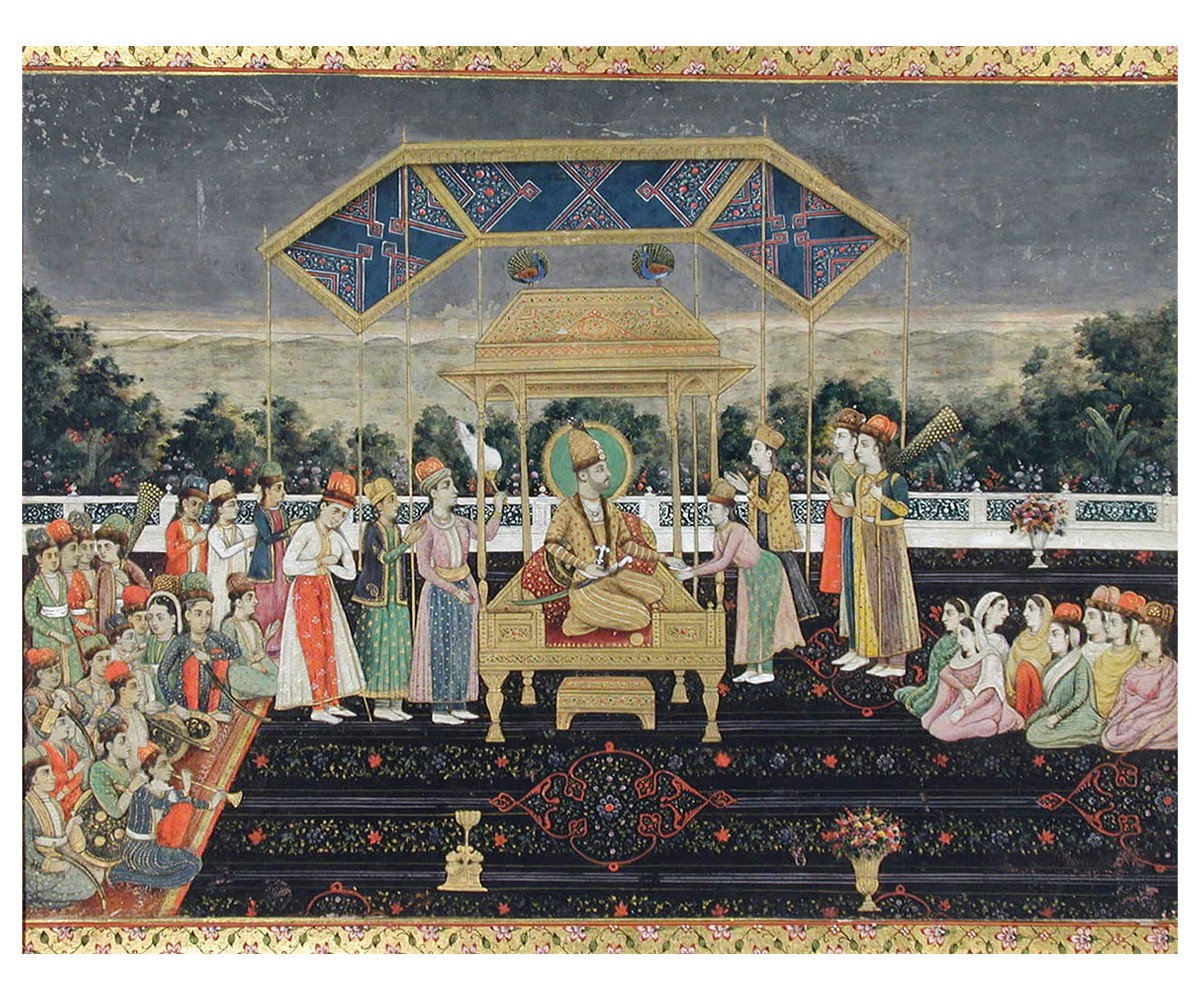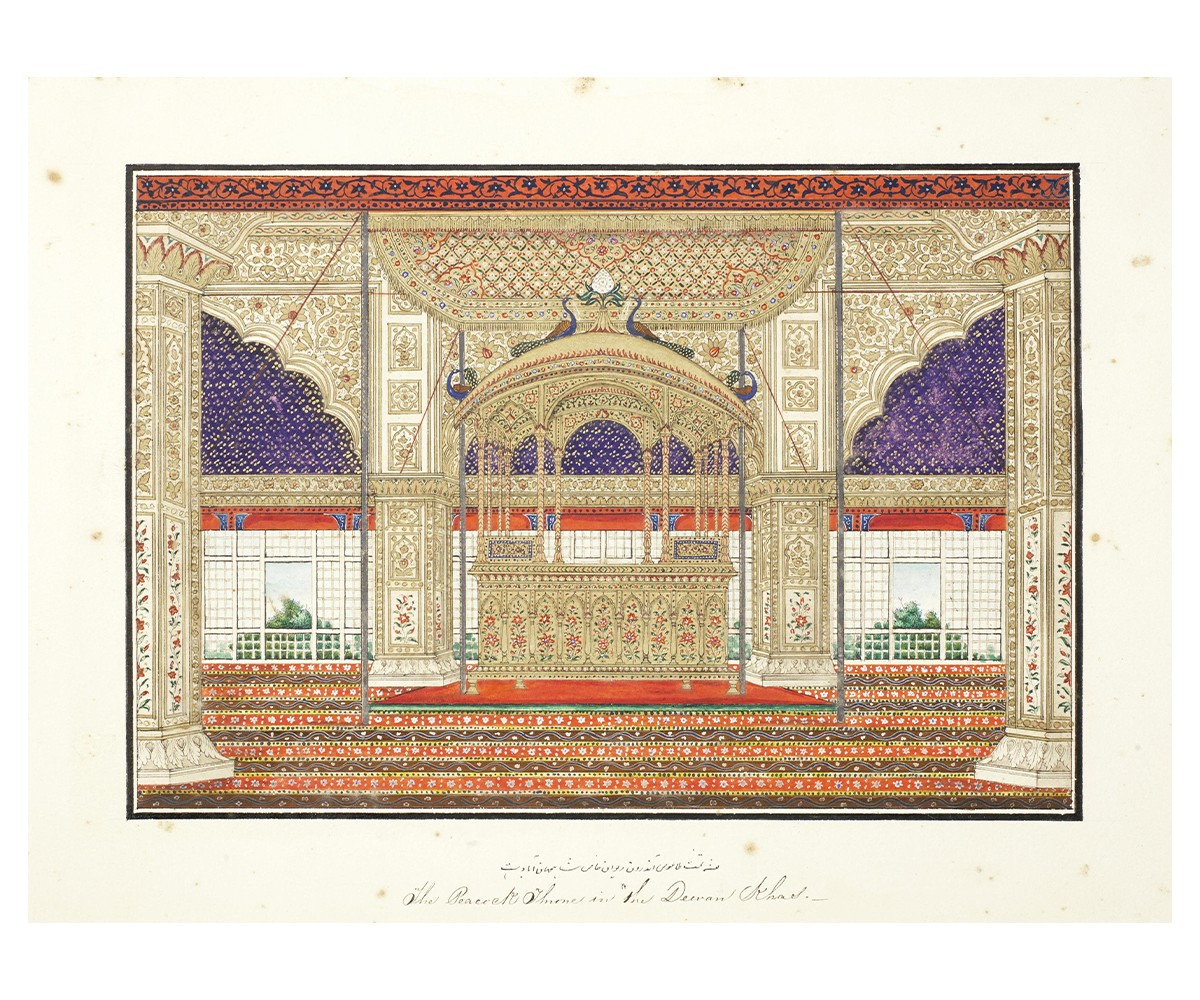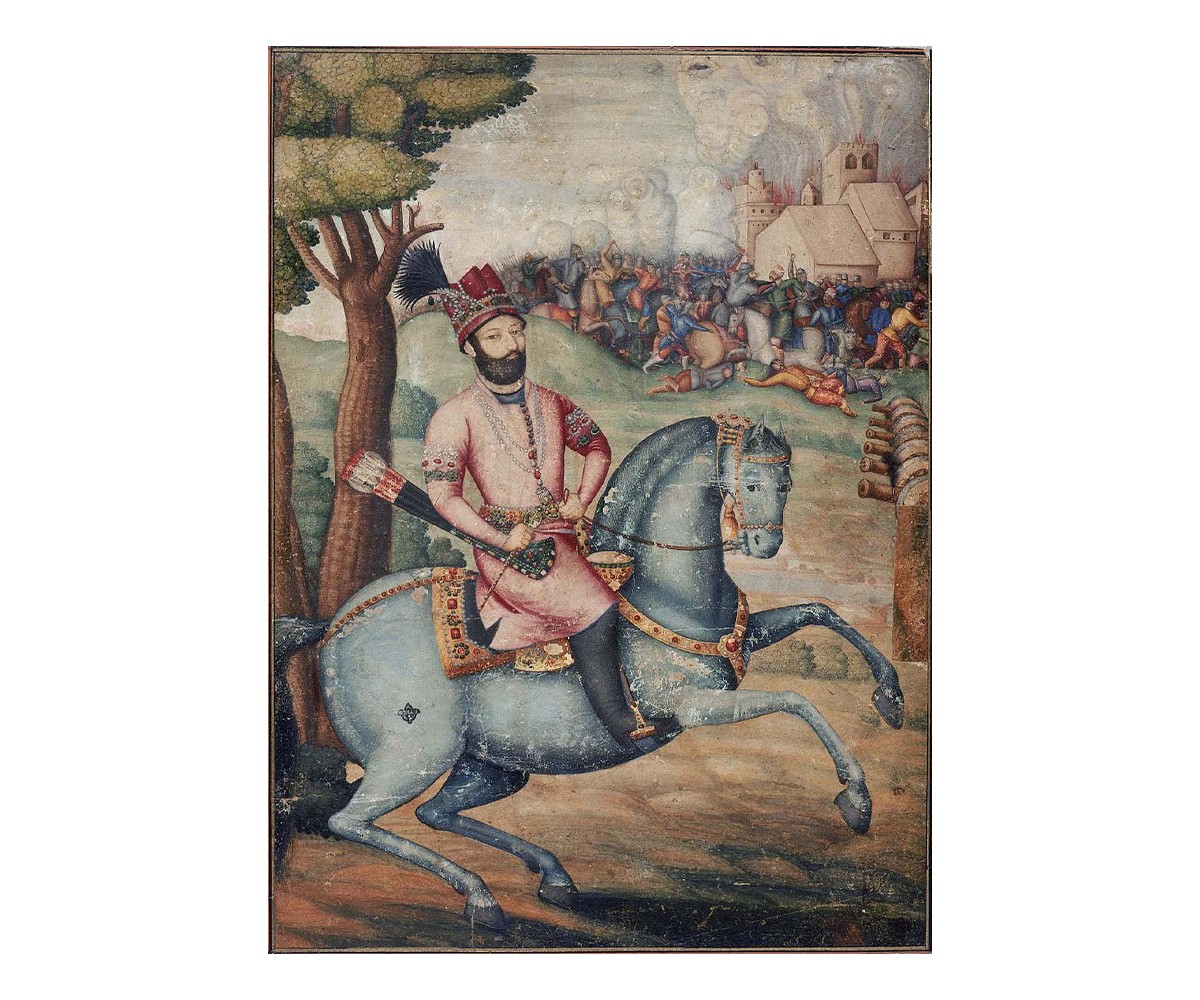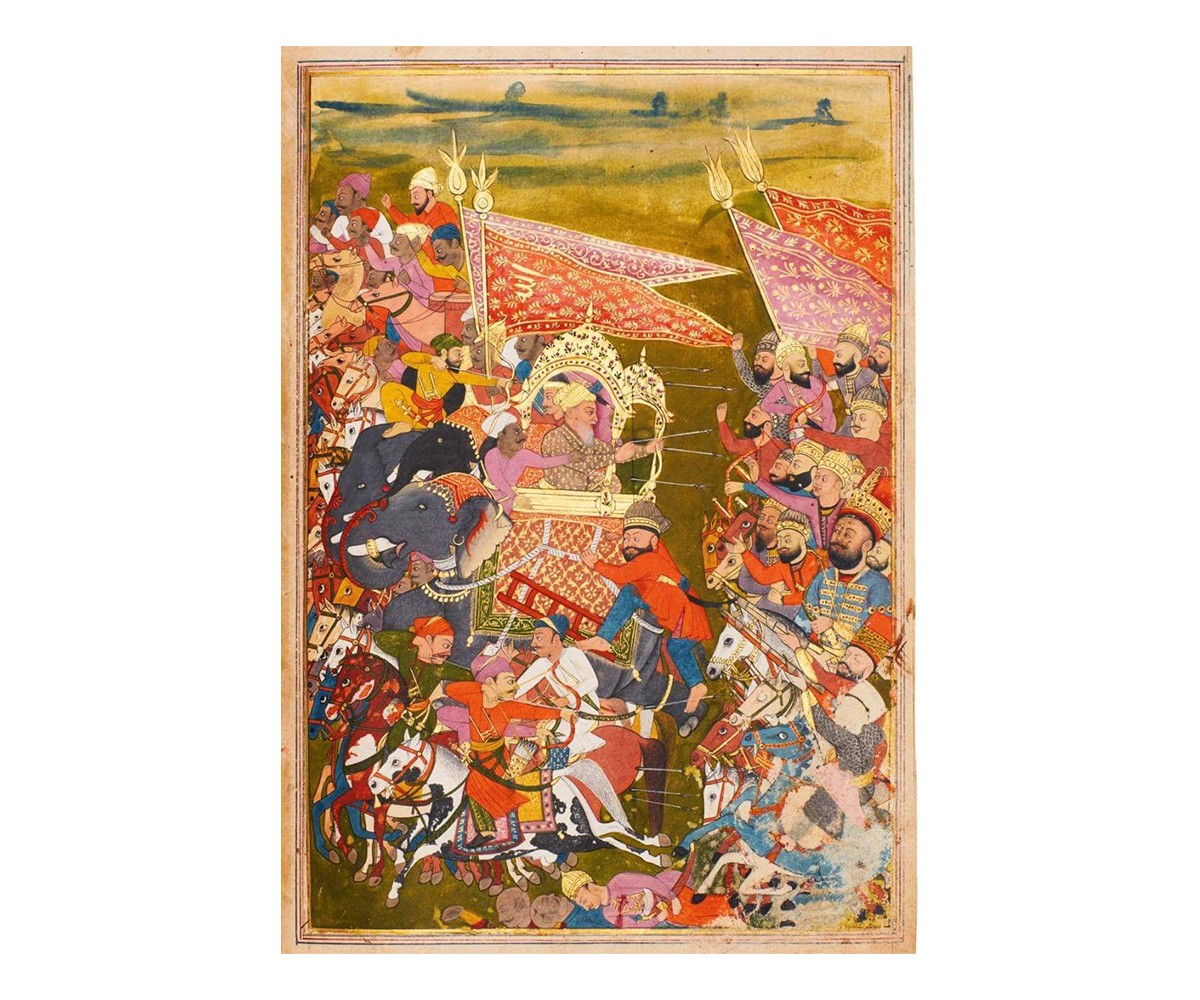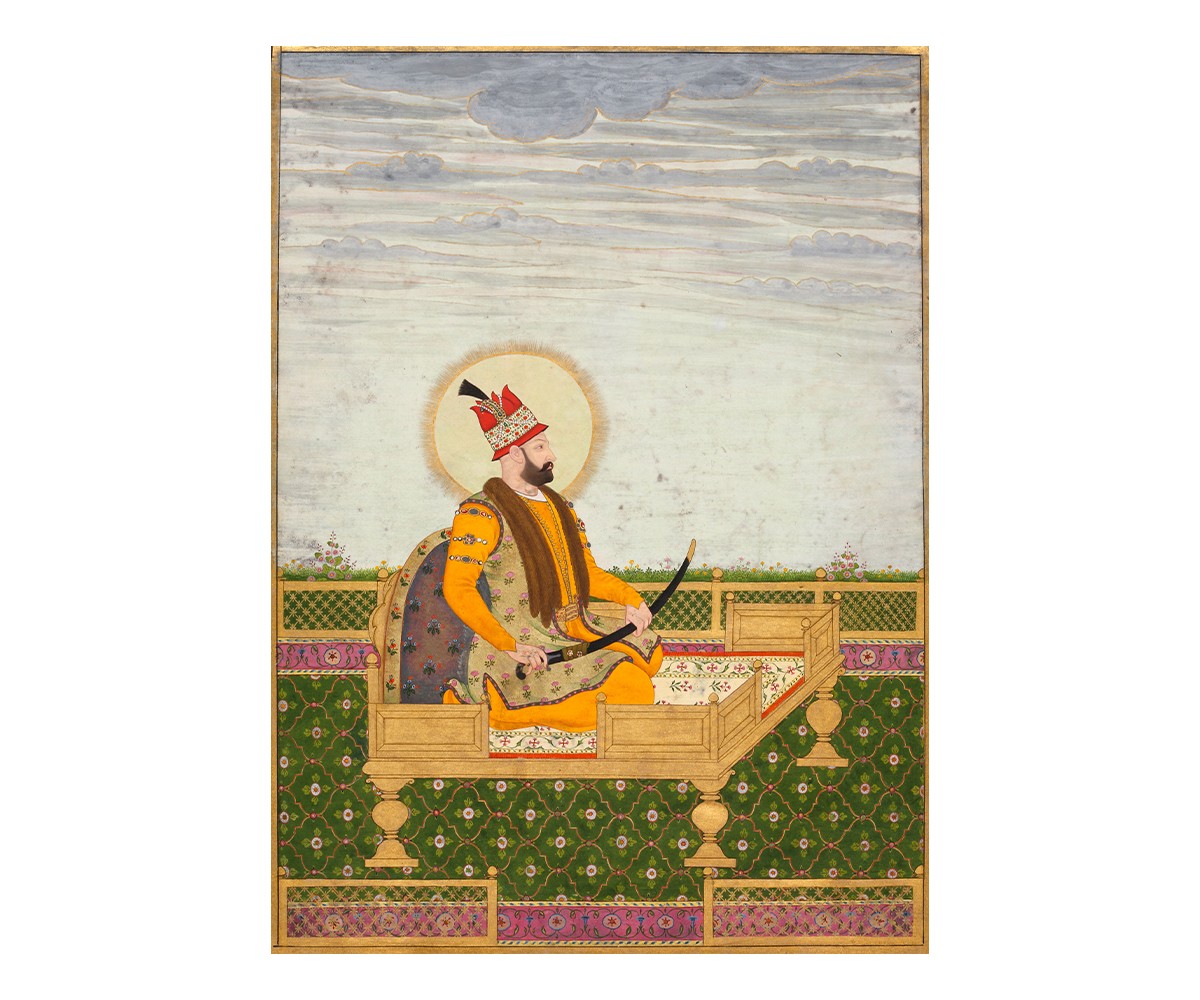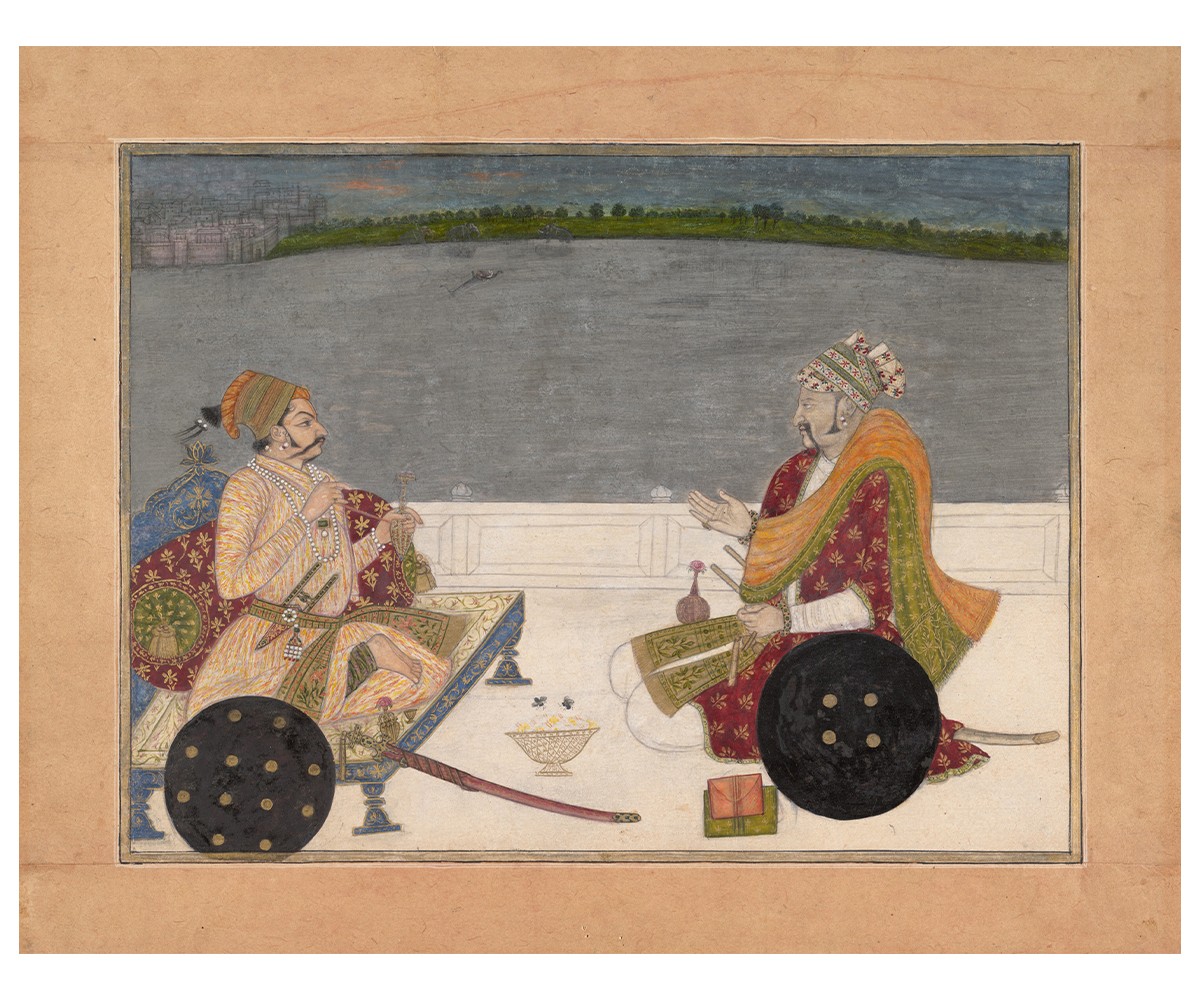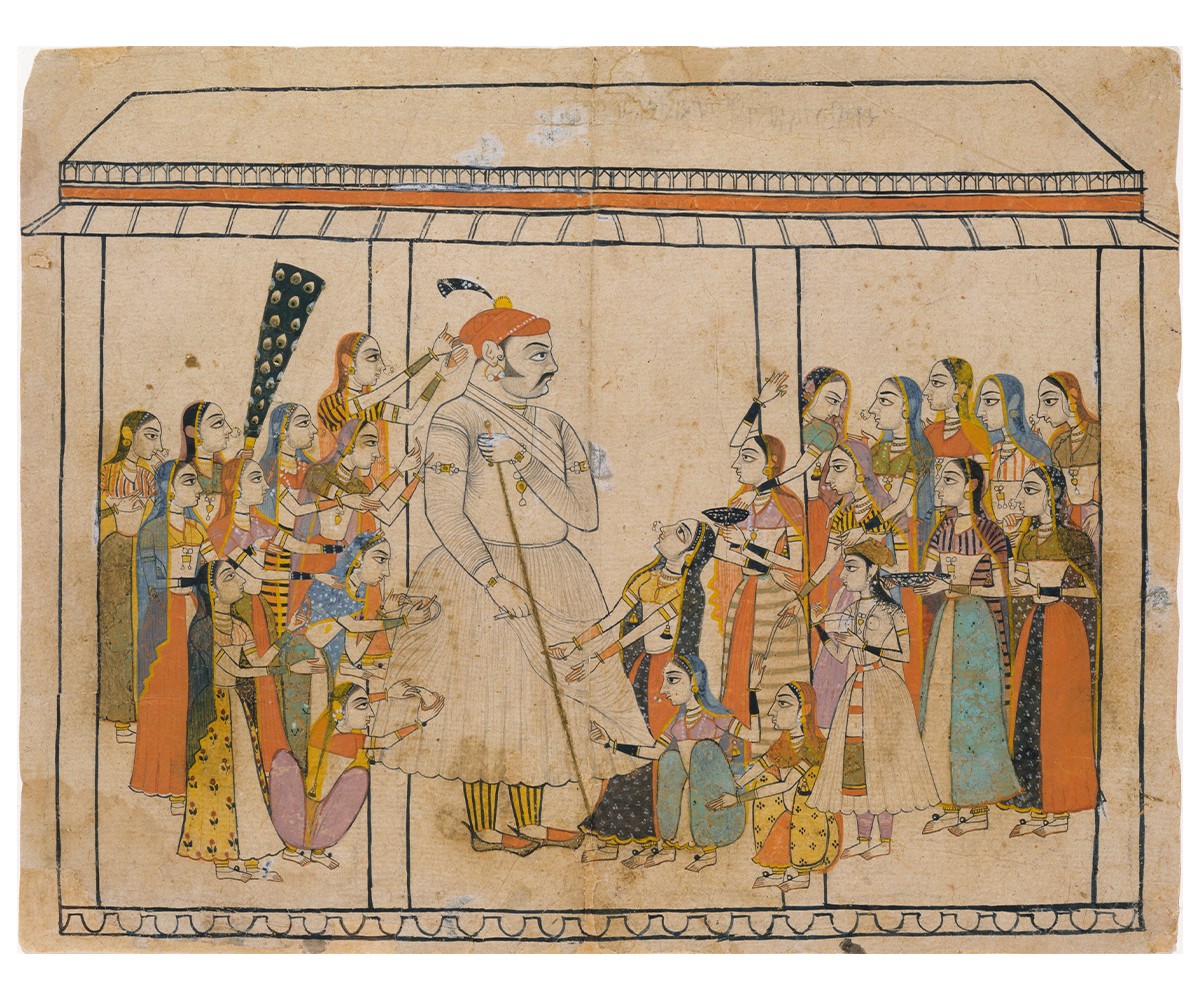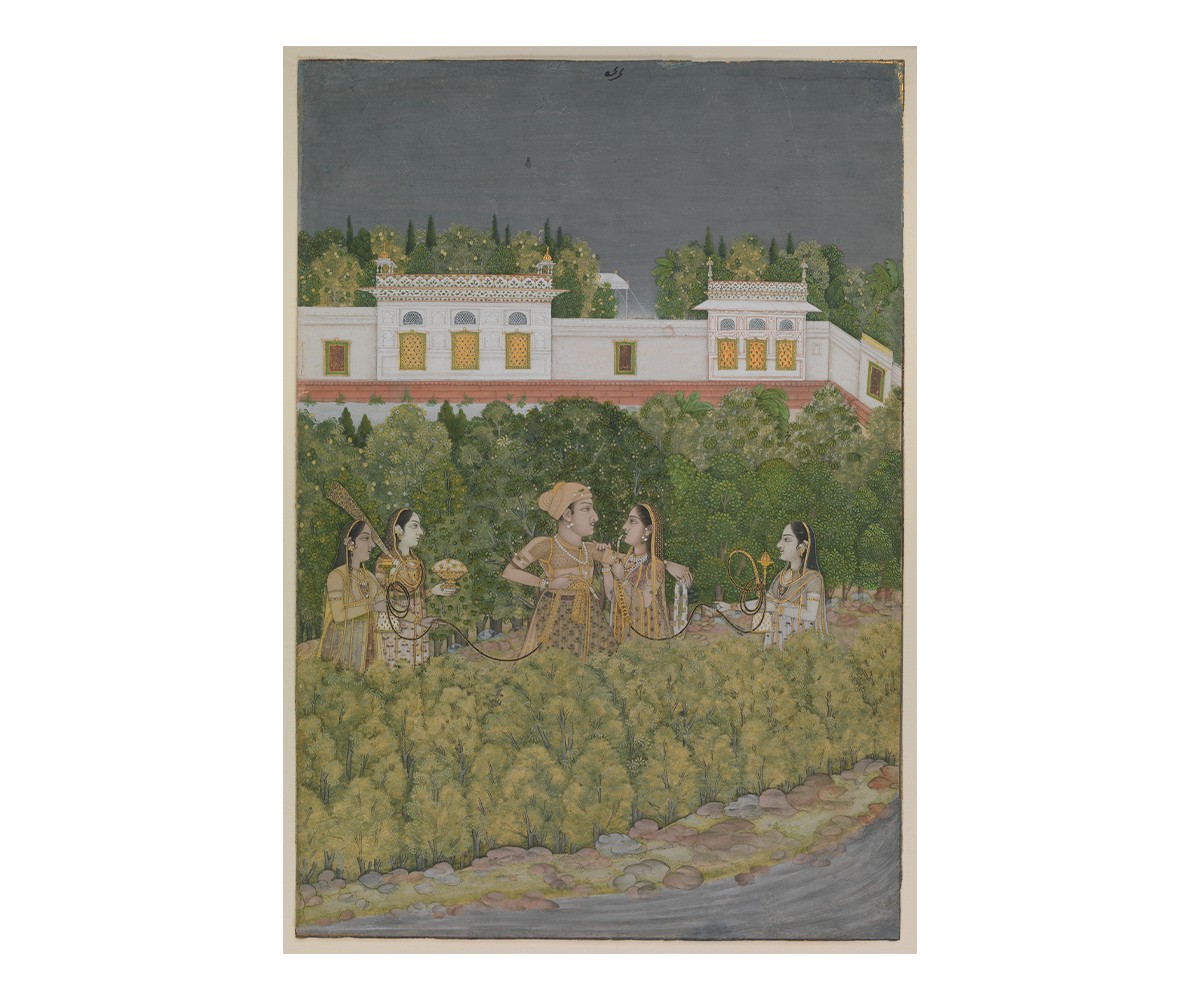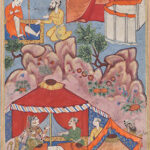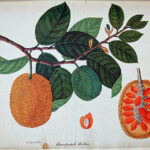Nader Shah Sacks Delhi; Artisans Seek New Patronage
1739
The Persian ruler Nader Shah’s siege of Delhi, and the resultant chaos and looting of the Mughal treasury forces many manuscript painters in the Mughal atelier to seek patronage elsewhere. Among the artefacts taken is the Peacock Throne, which was made in 1635 for Shah Jahan.
Mughal dominance in the subcontinent has been waning for a few decades by this point, and smaller kingdoms become more politically active and economically prosperous, allowing them to poach artists from the Mughal court to develop their own styles. Significant patrons who rise to prominence in the eighteenth century include the Pahari kingdoms in present-day Himachal Pradesh and Punjab, the courts of Marwar and Kishangarh in present-day Rajasthan, and Awadh in present-day Uttar Pradesh.
Bibliography
Aitken, Molly Emma. The Intelligence of Tradition in Rajput Court Painting. New Haven: Yale University Press, 2010.
Haidar, Navina Najat. “Art of South Asia (14th to 19th Centuries).” In Masterpieces from the Department of Islamic Art in the Metropolitan Museum of Art, edited by Maryam Ekhtiar, Priscilla P. Soucek, Sheila R. Canby, and Navina Najat Haidar, 338–405. New York: Metropolitan Museum of Art, 2011.
Feedback 
This entry appears in
Art in South Asia
Visit Timeline
Associated Timeline Events
First Published: March 11, 2024
Last Updated: May 20, 2024




